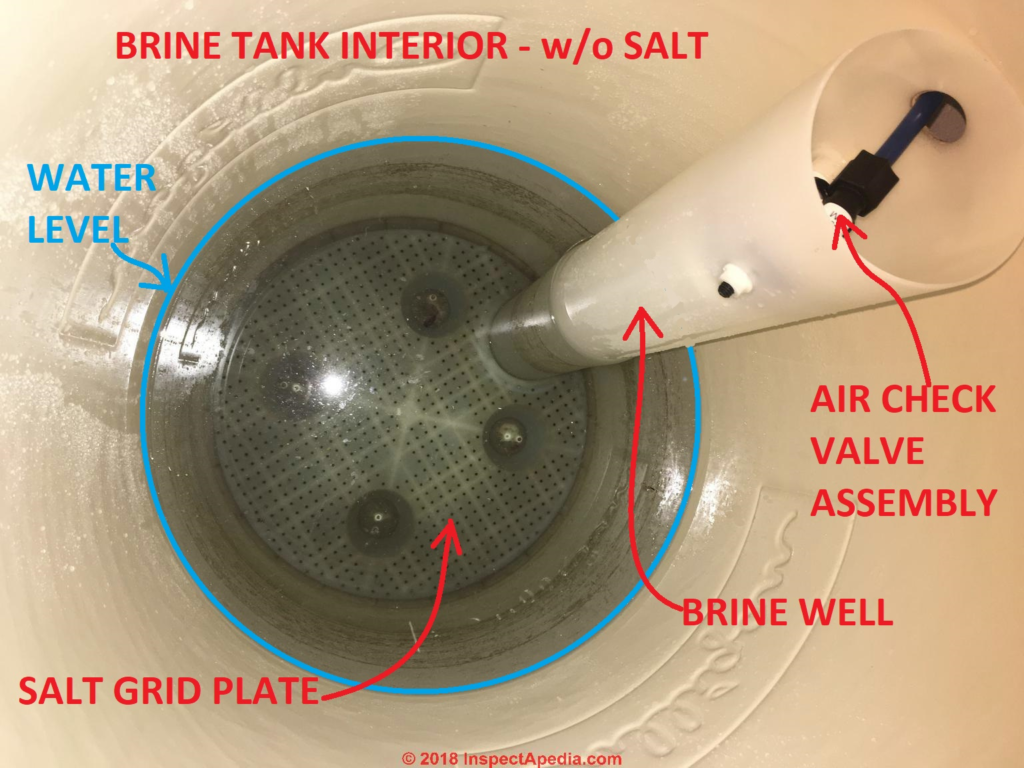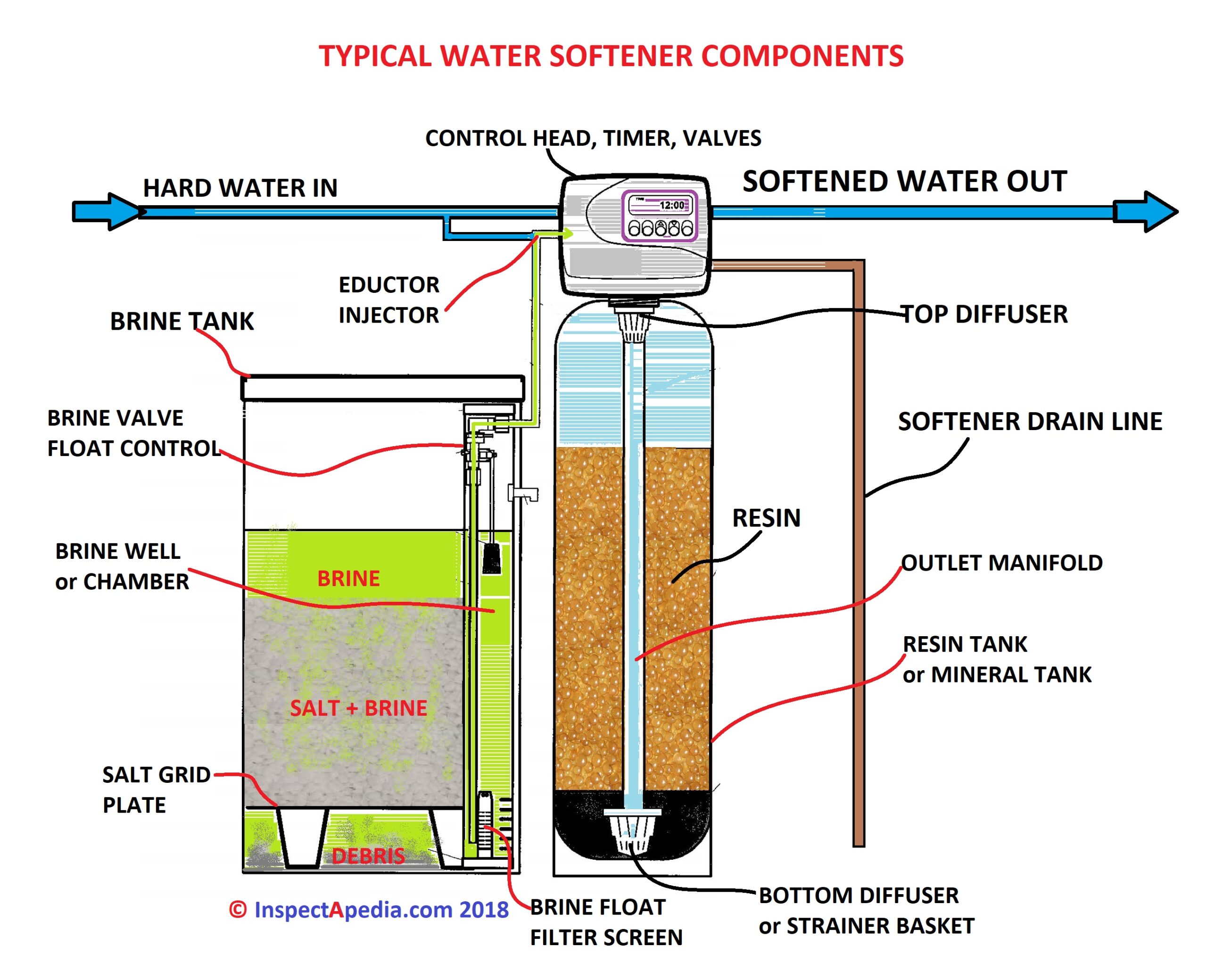Brine tanks are an essential component of water softening systems, responsible for creating the brine solution that regenerates the resin beads and removes hardness minerals from the water. However, sometimes these tanks can experience issues with excess water buildup, which can lead to inefficient water softening and potential damage to the system. In this blog post, we will explore the causes of excess water in brine tanks and provide a comprehensive troubleshooting guide to help you manage brine concentration for optimal water softening.
Managing Brine Concentration for Optimal Water Softening
Before we dive into troubleshooting excess water in brine tanks, it’s important to understand the role of brine concentration in the water softening process. Brine is a highly concentrated solution of salt and water that is used to regenerate the resin beads in a water softener. When the brine solution is flushed through the resin tank, it exchanges the hardness minerals (such as calcium and magnesium) for sodium ions, effectively “recharging” the resin beads and allowing them to continue removing hardness from the water.
The key to effective water softening is maintaining the proper brine concentration in the brine tank. If the brine solution is too weak, it won’t be able to effectively regenerate the resin beads, resulting in hard water. On the other hand, if the brine solution is too strong, it can lead to excess water buildup in the brine tank, causing issues such as overflow and leakage. Therefore, it’s crucial to monitor and manage brine concentration to ensure optimal water softening.
Monitoring and Troubleshooting Water Levels in Brine Tanks

One of the most common issues with brine tanks is excess water buildup, which can be caused by a variety of factors. The first step in troubleshooting this issue is to monitor the water level in the brine tank. If the water level is consistently rising, it’s a sign that there is excess water in the tank.
Understanding the Role of Water in Brine Tanks
To understand why excess water can be problematic in brine tanks, we need to first understand the role of water in the water softening process. As mentioned earlier, brine is a concentrated solution of salt and water. When the brine solution is flushed through the resin tank, the water dissolves the salt and creates a highly concentrated solution. This concentrated solution then flows through the resin tank, exchanging sodium ions for hardness minerals.
Once the regeneration process is complete, the remaining brine solution (now diluted with water from the resin tank) is drained out of the system. However, if there is too much water in the brine tank, it can dilute the brine solution and weaken its ability to regenerate the resin beads. This can lead to hard water and other issues.
Identifying the Causes of Excess Water in Brine Tanks

There are several potential causes of excess water buildup in brine tanks. Some of the most common include:
- Malfunctioning or clogged brine line: The brine line is responsible for delivering the brine solution from the brine tank to the resin tank. If this line is clogged or malfunctioning, it can prevent the brine solution from properly draining out of the brine tank, leading to excess water buildup.
- Faulty float valve: The float valve is responsible for regulating the water level in the brine tank. If this valve is not functioning properly, it can allow too much water to enter the brine tank, causing excess water buildup.
- Inadequate brine cycle frequency or duration: If the brine cycle (the time when the brine solution is flushed through the resin tank) is too short or infrequent, it can result in insufficient brine concentration and excess water buildup.
- Water softener malfunction: In some cases, the issue may not be with the brine tank itself, but with the water softener as a whole. Malfunctions in other components of the system can lead to issues with brine concentration and excess water buildup.
Inspecting and Maintaining Components to Prevent Water Buildup
To troubleshoot excess water in brine tanks, it’s important to regularly inspect and maintain the various components of the system. This will help identify any potential issues before they become major problems. Here are some key components to focus on:
Brine Line
The brine line is responsible for delivering the brine solution from the brine tank to the resin tank. Over time, this line can become clogged with salt or other debris, preventing the brine solution from properly draining out of the brine tank. Regularly inspecting and cleaning the brine line can help prevent excess water buildup.
Float Valve
The float valve is responsible for regulating the water level in the brine tank. If this valve is not functioning properly, it can allow too much water to enter the brine tank, causing excess water buildup. Check the float valve regularly to ensure it is clean and functioning correctly.
Brine Tank
The brine tank itself should also be inspected regularly for any signs of damage or wear. Cracks or leaks in the tank can lead to excess water buildup and other issues. If you notice any damage, it’s important to address it immediately to prevent further problems.
Resin Tank
While the resin tank is not directly responsible for brine concentration, it plays a crucial role in the water softening process. Regularly inspecting and maintaining the resin tank can help ensure that it is functioning properly and exchanging hardness minerals for sodium ions effectively.
Adjusting Water Inlet Valves for Proper Brine Concentration

Another potential cause of excess water in brine tanks is an imbalance between the water inlet and outlet valves. These valves control the flow of water into and out of the brine tank, and if they are not properly adjusted, it can lead to issues with brine concentration.
To adjust the water inlet valve, first, locate the valve on the side of the brine tank. Using a flathead screwdriver, turn the screw on top of the valve clockwise to decrease the flow of water into the tank or counterclockwise to increase the flow. It may take some trial and error to find the right balance, but adjusting the water inlet valve can help prevent excess water buildup in the brine tank.
Optimizing Brine Cycle Frequency and Duration
As mentioned earlier, inadequate brine cycle frequency or duration can also lead to issues with brine concentration and excess water buildup. The brine cycle should be long enough to fully regenerate the resin beads and strong enough to effectively remove hardness minerals from the water. If the brine cycle is too short or infrequent, it can result in insufficient brine concentration and excess water in the brine tank.
To optimize the brine cycle, consult the manufacturer’s instructions for your specific water softener model. They should provide recommendations for the ideal frequency and duration of the brine cycle based on your water hardness level and household size. Adjusting the brine cycle accordingly can help prevent excess water buildup and ensure optimal water softening.
Preventing Overflow and Leakage from Brine Tanks

Excess water buildup in brine tanks can also lead to more serious issues such as overflow and leakage. This can not only damage the system but also waste water and salt. To prevent these problems, here are some key steps you can take:
- Regularly inspect and maintain all components of the system, as mentioned earlier.
- Keep the brine tank clean and free of debris.
- Check the brine tank’s overflow tube regularly to ensure it is not clogged or damaged.
- If you notice any leaks or signs of damage, address them immediately to prevent further issues.
Ensuring Proper Water Quality for Efficient Water Softening
In addition to monitoring and maintaining the brine tank itself, it’s also important to consider the quality of the water being used in the system. Hard water with high levels of iron, manganese, or other contaminants can affect the efficiency of the water softener and lead to excess water buildup in the brine tank.
To ensure proper water quality, consider installing a pre-filter or water treatment system before the water enters the water softener. This can help remove any impurities that may interfere with the water softening process and prevent excess water buildup.
Conclusion
Excess water buildup in brine tanks can be a frustrating and potentially damaging issue for water softening systems. However, by understanding the role of water in brine tanks, identifying potential causes of excess water, and regularly inspecting and maintaining key components, you can effectively troubleshoot and prevent this problem. By following the tips outlined in this blog post, you can manage brine concentration for optimal water softening and ensure efficient and effective operation of your water softener.
Read more blogs at Business time daily

